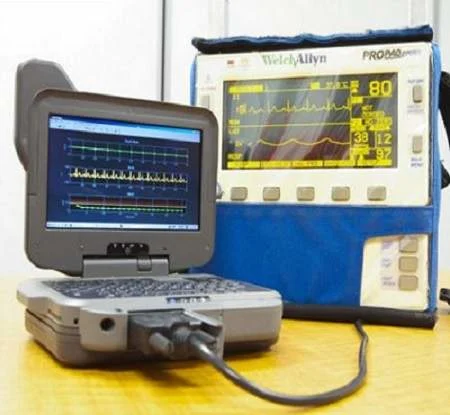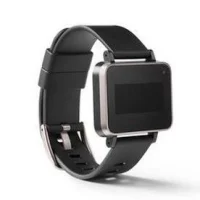U.S. researchers have successfully field tested a system that analysed patient vital signs during emergency transport, finding that it could detect those with life-threatening bleeding before they arrive at the hospital, potentially saving lives. The study, published in the journal Shock, was conducted by researchers from Massachusetts General Hospital (MGH), the U.S. Army, air ambulance service Boston MedFlight, and two other Boston trauma centres.
Often teams transporting patients either by air or ground ambulance notify receiving hospitals of potentially deadly injuries, but the information transmitted may be too general to identify those at risk of life-threatening bleeding. As such, even when a patient is clearly at risk of serious blood loss, decisions about the need for surgical repair and blood transfusions may not be made until assessment is completed at the trauma centre.
"Our study demonstrated that automated analysis of patients' vital signs during prehospital transport was significantly better at discriminating between patients who did and did not have life-threatening haemorrhage," says senior author Andrew Reisner, MD, MGH Department of Emergency Medicine. "Receiving more reliable information before the patient arrives can help hospitals be ready for immediate surgery and replenishment of lost blood without wasting time and resources on false alarms."
Dr. Reisner and his team sought to investigate whether computerised analysis of data being collected by vital signs monitors during transport could identify patients with dangerous bleeding. For this study, they developed software based on statistical techniques currently used in stock market trading to determine whether particular data points represent real problems and not random fluctuations.
The system called APPRAISE (Automated Processing of the Physiological Registry for Assessment of Injury Severity) consists of an ultracompact personal computer linked to a standard patient monitor. It is able to simultaneously combine measures of blood pressure with those of heart rate, breathing and the amount of blood pumped with each heartbeat. APPRAISE was installed in two MedFlight helicopters and gathered data on more than 200 trauma patients transported to participating Boston hospitals from February 2010 to December 2012.
In order that patient care not be affected by a still-unproven system, the APPRAISE system's data analysis was not provided to MedFlight crews. In addition, the researchers analysed data from a 2005 study of vital sign data gathered manually by a Houston-based air ambulance system. Outcomes information for both patient groups was gathered by chart review. Results showed that:
"The fact that decisions to proceed with surgery or to replenish lost blood often occur only after patients' arrival means there are delays — sometimes brief but sometimes prolonged — in initiating such life-saving interventions," explains Dr. Reisner, an assistant professor of Emergency Medicine at Harvard Medical School.
His team is working on a follow-up study to use the system in actual trauma care and determine whether it leads to faster treatment of life-threatening bleeding and better patient outcomes. "This approach could also be helpful for patients transported by ground ambulance and for hospitalised patients at risk of unexpected haemorrhage, such as during recovery from major surgery," the doctor adds.
Source: Massachusetts General Hospital
Image credit: US Army Medical Research and Materiel Command
Often teams transporting patients either by air or ground ambulance notify receiving hospitals of potentially deadly injuries, but the information transmitted may be too general to identify those at risk of life-threatening bleeding. As such, even when a patient is clearly at risk of serious blood loss, decisions about the need for surgical repair and blood transfusions may not be made until assessment is completed at the trauma centre.
"Our study demonstrated that automated analysis of patients' vital signs during prehospital transport was significantly better at discriminating between patients who did and did not have life-threatening haemorrhage," says senior author Andrew Reisner, MD, MGH Department of Emergency Medicine. "Receiving more reliable information before the patient arrives can help hospitals be ready for immediate surgery and replenishment of lost blood without wasting time and resources on false alarms."
Dr. Reisner and his team sought to investigate whether computerised analysis of data being collected by vital signs monitors during transport could identify patients with dangerous bleeding. For this study, they developed software based on statistical techniques currently used in stock market trading to determine whether particular data points represent real problems and not random fluctuations.
The system called APPRAISE (Automated Processing of the Physiological Registry for Assessment of Injury Severity) consists of an ultracompact personal computer linked to a standard patient monitor. It is able to simultaneously combine measures of blood pressure with those of heart rate, breathing and the amount of blood pumped with each heartbeat. APPRAISE was installed in two MedFlight helicopters and gathered data on more than 200 trauma patients transported to participating Boston hospitals from February 2010 to December 2012.
In order that patient care not be affected by a still-unproven system, the APPRAISE system's data analysis was not provided to MedFlight crews. In addition, the researchers analysed data from a 2005 study of vital sign data gathered manually by a Houston-based air ambulance system. Outcomes information for both patient groups was gathered by chart review. Results showed that:
- In both groups, the APPRAISE system successfully identified 75 to 80 percent of patients with life-threatening bleeding, compared with 50 percent who were identified by standard clinical practice.
- Notifications provided by the system would have been available within 10 minutes of initial monitoring and as much as 20 to 40 minutes before patients' arrival at the trauma centres.
"The fact that decisions to proceed with surgery or to replenish lost blood often occur only after patients' arrival means there are delays — sometimes brief but sometimes prolonged — in initiating such life-saving interventions," explains Dr. Reisner, an assistant professor of Emergency Medicine at Harvard Medical School.
His team is working on a follow-up study to use the system in actual trauma care and determine whether it leads to faster treatment of life-threatening bleeding and better patient outcomes. "This approach could also be helpful for patients transported by ground ambulance and for hospitalised patients at risk of unexpected haemorrhage, such as during recovery from major surgery," the doctor adds.
Source: Massachusetts General Hospital
Image credit: US Army Medical Research and Materiel Command
References:
Reisner AT, Reifman J et al. (2015) Automated Analysis of Vital Signs to Identify Patients With Substantial Bleeding Before Hospital Arrival. Shock, 2015; 43 (5): 429 DOI: 10.1097/SHK.0000000000000328
Latest Articles
healthmanagement, trauma, bleeding, APPRAISE system, vital signs, emergency transport, air ambulance
Researchers have successfully tested a system that analysed patient vital signs during emergency transport, finding that it could detect those with life-threatening bleeding before they arrive at the hospital.








